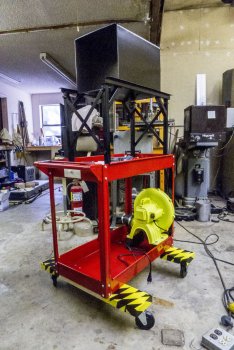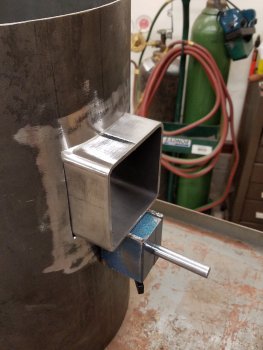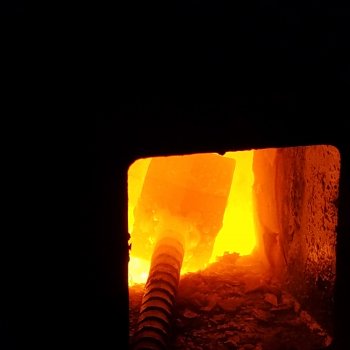Chris623
Well-Known Member
If this thread is in the wrong forum, please move it.
I've started laying out on paper the exact dimensions of my forge..........showing the inside measurement of the 12" square pipe and the 2 1/2" thick K-26 soft brick all the way around. What I end up with is a forge cavity sized 6 1/4" x 6 1/4 x 17". Now I need to decide how thick to cast the KOL30. Originally my thought was to cast 1" thick all round. But that would only end up giving me a 4 1/4" square cavity. My primary purpose for building a forge is to make knives. I eventually would like to be able to forge weld (fake damascus) blades. So will a 4 1/4" square cavity be large enough to do that??? Not having any experience, I'm thinking maybe not! So would 1/2" on the side-walls and ceiling of the forge and then 1" on the floor still give the brick plenty of protection? I'm kind of stuck here right now until I make up my mind, so would really appreciate what you knife makers think.
I've attached a pic of my forge stand with the forge on top. Looks humongous but that's the wide-angle lens effect. The center of the forge cavity will be 53" off the concrete floor which is perfect for an old phart who's back isn't crazy about bending over. This is a forced air ribbon burner forge, if that makes any difference.
This is a forced air ribbon burner forge, if that makes any difference.
I've started laying out on paper the exact dimensions of my forge..........showing the inside measurement of the 12" square pipe and the 2 1/2" thick K-26 soft brick all the way around. What I end up with is a forge cavity sized 6 1/4" x 6 1/4 x 17". Now I need to decide how thick to cast the KOL30. Originally my thought was to cast 1" thick all round. But that would only end up giving me a 4 1/4" square cavity. My primary purpose for building a forge is to make knives. I eventually would like to be able to forge weld (fake damascus) blades. So will a 4 1/4" square cavity be large enough to do that??? Not having any experience, I'm thinking maybe not! So would 1/2" on the side-walls and ceiling of the forge and then 1" on the floor still give the brick plenty of protection? I'm kind of stuck here right now until I make up my mind, so would really appreciate what you knife makers think.
I've attached a pic of my forge stand with the forge on top. Looks humongous but that's the wide-angle lens effect. The center of the forge cavity will be 53" off the concrete floor which is perfect for an old phart who's back isn't crazy about bending over.



